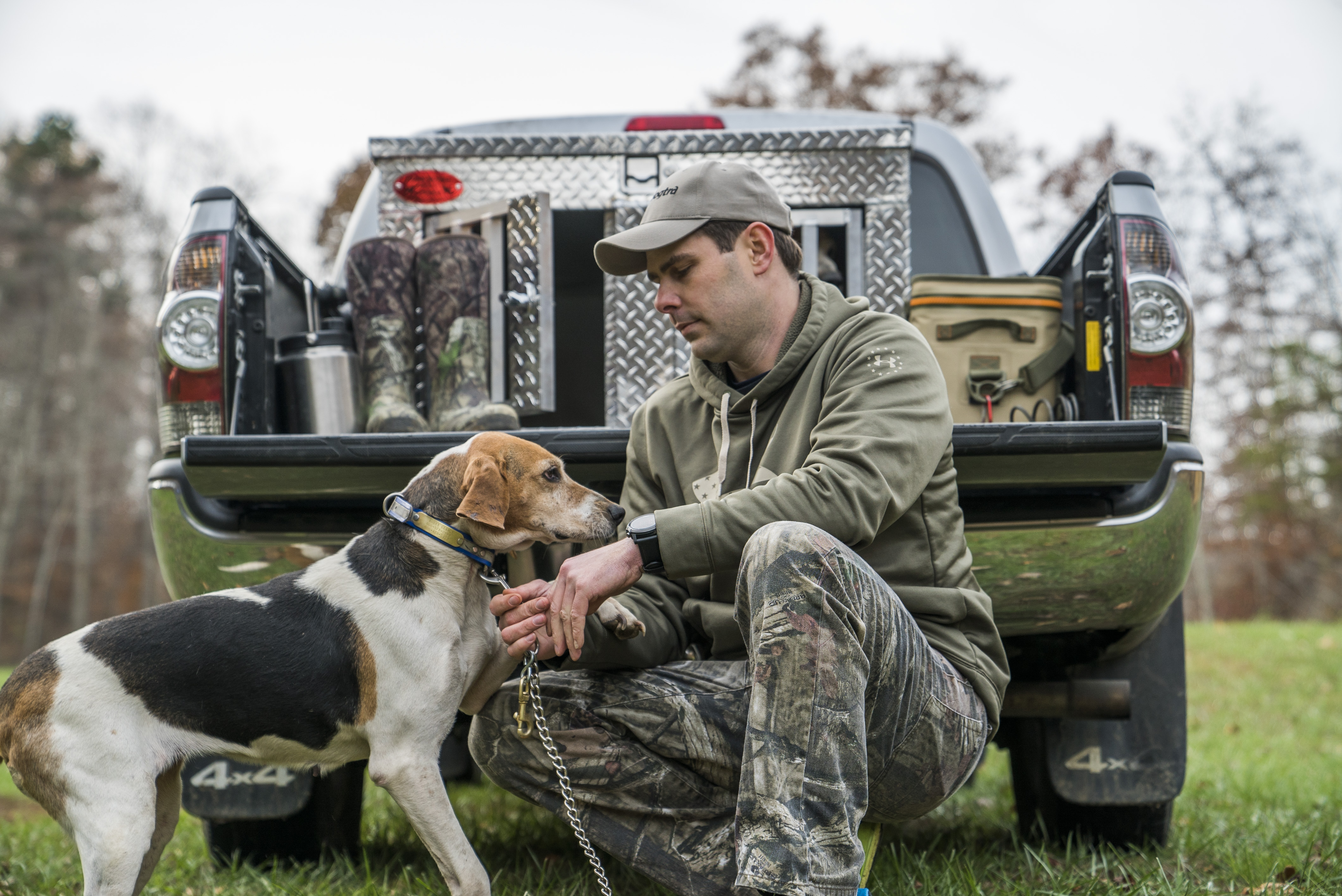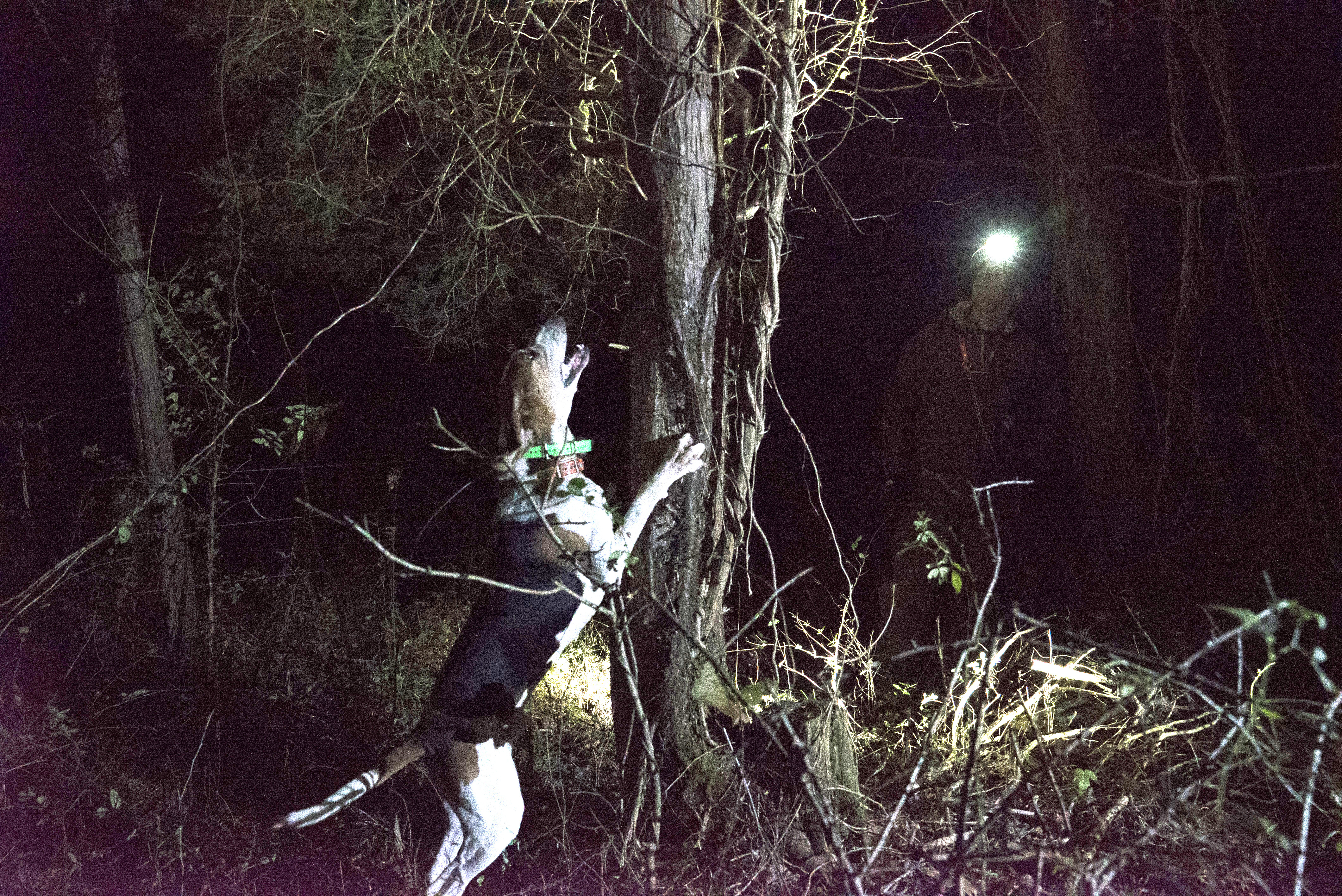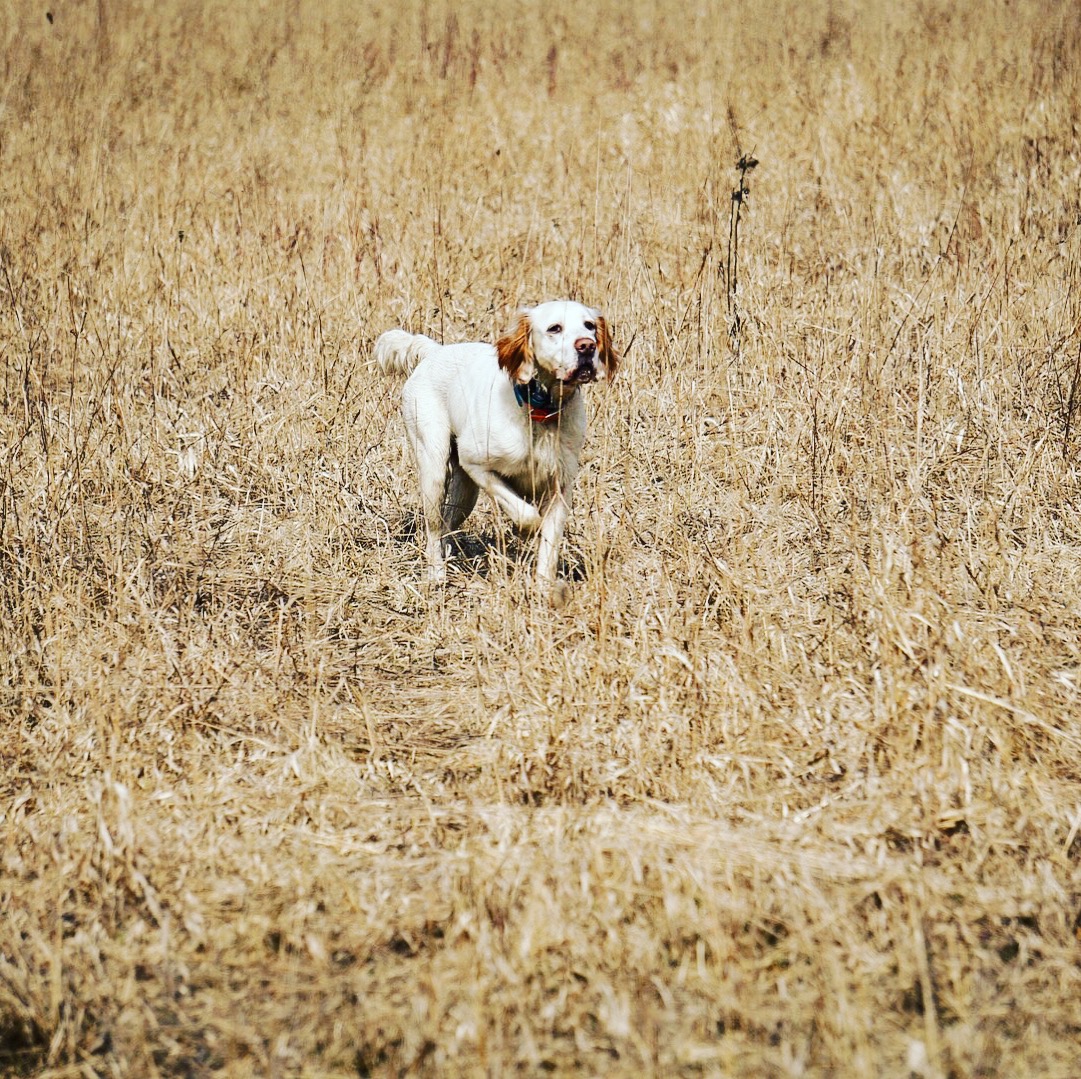A hunter and his dog are a team. For a team to be the most effective, the members of that team must be able to communicate with each other, know where each is and understand what the purpose for the team is. When you’re deciding which hunting dog collar to purchase, there are several questions you need to ask yourself before you start your search.
- What do you want your dog to do, how will you train it to perform that task, and what’s the easiest way for the dog and you to communicate when you’re out of the dog’s sight and its hearing?
- How do you know when your pointing dog goes on point, if you can’t see it, how can you know the distance you are from that dog, and how can you make that dog, “Whoa,” in a strong wind when you know the dog can’t hear your commands.
- What are the three most important things to know, if you’re a coon hunter, including where’s the dog when I can’t hear it; where’s my truck; and how can I get to my dog or to my truck from where I am?
- How can you prevent your waterfowling dog from jumping into the water when the dog first sees a flight of ducks fly over it? How can you prevent the dog from wanting to retrieve a duck, when the ducks light down in the decoy, but you haven’t fired a shot yet? How can you teach a dog to make a blind retrieve when the dog hasn’t seen the duck or goose go down?
- How can you correct any hunting dog when it starts running, chasing or swimming after the game you don’t want the dog to hunt?
What Expert Dogmen Recommend
Tyler Webster, an upland bird dog trainer and breeder for many years from North Dakota says, “Really there are only three basic commands that I must teach my dogs, ‘Stop!’ ‘Come here,’ and ‘Walk with me.’”
A coon dog trainer and hunter, Kodey Glancy of Kentucky, explained that the fourth command coon dogs need to know is, “Load up. That means either get into your kennel, jump into the back of my truck or jump into the cab of my truck.”

Pete Fischer of central Minnesota has been training dogs and teaching seminars on dog training since the 1970s and he’s found that an e-collar is, “One of the fastest ways to train a dog to do what you want the dog to do. However, having said that, I think the e-collar only should be used to reinforce the commands the dog already knows. The four commands I want my dog to know are, ‘Come to me,’ ‘Stop,’ ‘Sit,’ and ‘Go and get in your kennel.’ All these commands, which are basic obedience commands should be taught in the backyard before you ever think about putting an e-collar or any other type of training or tracking collar on a dog. Whenever your dog does what you’ve asked it to do, you need to give that dog positive reinforcement like petting it or giving it food or communicating in some way, ‘Well, done, buddy. I’m proud of you.’
“One of the biggest mistakes many hunters make is using an e-collar to stimulate the dog when the dog doesn’t know what they want it to do. For instance, if you take Little Johnny to his first baseball practice, and he’s lucky enough to hit the ball, well, if Little Johnny doesn’t know what to do, and you yell and scream, ‘run Johnny run,’ he may run to the pitcher’s mound or to first or second base. You haven’t taught him what to do after he hits the ball. So, if you give a dog a command, and the dog doesn’t understand what that command means, you can’t expect that dog to perform the way you want it to perform,” Fischer said.
To decide what type of training collar or tracking collar you may need, and what will work best for you and your dog, you need to learn all you can about the various kinds of tracking and training collars on the market today.
The Costs of Hunting Dog Collars
Another factor that you need to consider is how much you’ll have to pay to get the right training and/or tracking collar for your hunting dog. E-collars and GPS collars are designed for various-sized dogs, dogs with different temperaments and dogs that either work close or are wide-ranging. For instance, you don’t need a training collar or a tracking collar with a nine mile range if your dog will be hunting in open terrain and you’ll be close to the dog while it works.

However, if your dog is a coon dog, a boar-hunting dog or a mountain-lion hound, you don’t want a collar that only has a range of 300 yards to one mile. You need a collar that allows you to keep up with the dog when it’s covering a vast amount of territory to give you a way to reinforce the, “Come to me,” or “Stop,” commands, if that dog doesn’t do what it’s supposed to do.
Other Considerations When Choosing a Hunting Dog Collar
Many of the collars available on the market today are GPS collars that use satellite technology to show you where you are, where the dog is, and where the truck is. Some of these collars can be synced to Google Maps. But in years gone by, a hunting dog collar may have been a simple leather one.
Kodey Glancy, known as the “Kentucky Cooner”, says, “When I first started coon hunting with my grandpa, the only tracking collars I had were brass nameplates riveted to our dogs’ leather collars. We’d go into the woods to hunt raccoons just as the light was fading from the day. We might not come out of the woods until the sun was up because we’d been lost. Our dogs often were lost too. Sometimes we might not get our dogs back for two to three days after an all-night hunt. Then some kind soul would catch my dog, look at its brass nameplate, call me and say, ‘I think I’ve got your dog.’

“But today I can use my cell phone with a Dogtra PATHFINDER collar, pull down Google Earth with an app that syncs with the Pathfinder and not only see where I am but also where my coon dog and my truck are and know the locations of rivers, streams, highways, houses, barns and everything in the general area where we’ve been hunting raccoons. Before we hunt, if I’m fairly sure I’ll have spotty cell-phone service, I can pull down the Google Map I think I’ll need, store it in my cell phone’s memory and have the access to features on the map that I need. Then I can use my truck to go down a road that’s closer to where my dog is, without having to cross a creek, crawl through briars or walk 1-1/2 miles.”
To select the best hunting dog collar for the dog you plan to hunt with in your sport, you need to know the:
- Type of terrain where you’ll be hunting.
- Approximate distance you’ll want to be to stay in touch with your dog.
- Size of the dog that will wear the collar.
- Amount of time you’re planning to commit to obedience train your dog and to help the dog understand how you can communicate with it through using a training collar.
- Value of your dog. If your hunting dog is headed toward a busy road, and you can’t stop the dog, then a training collar is the best insurance you’ll ever buy for your hunting dog to keep it safe.
- Kind of property you’ll be hunting – perhaps new lands or public lands you’ve never hunted before with your dog. If you have to walk all night or all day and night to find your dog and your truck, how much is that time worth to you by having a tracking collar that quickly and easily can show you where your dog is, where you are, and where your truck is.
The more functions a hunting dog collar has, the length of the collar’s battery life, the distance the hunter can be from his dog, and the size of his dog also impact how to choose the best collar for your dog. Bigger dogs like hounds, some retrievers and others can wear larger collars that weigh more than those for small hunting dogs, beagles or squirrel dogs can. If your hunting dog fits into the small hunting-dog category, you may want to consider using a smaller collar like the Dogtra PATHFINDER MINI, which includes all the functions of a tracking and training collar but is in a smaller box with a smaller battery and less range.

For all these reasons before you select your hunting-dog collar, you want to learn all you can about the different types of hunting-dog collars available in the marketplace, what each collar is designed to do, and how much money the collar will cost you. Although a collar is designed to be worn by the dog, the person with the cell phone or the remote has the advantage to not only know where his dog is and what it’s doing but also where his vehicle is, and what’s the quickest way to reach his dog and get home.
How Veteran Upland Bird Hunter Tyler Webster Trains His Dogs and Selects Their Collars
Tyler Webster, hunts seven states every year, including North Dakota, Montana, New Mexico and the states along the Mexican border, has a podcast, “Birds, Booze and Buds” that he started two years ago on upland bird hunting and pointing dogs.

“I started hunting upland birds long before I owned a pointing dog, going with my grandpa and my uncles when I was 8 years old – even before I was old enough to carry a shotgun,” Webster said. “The first time I ever hunted with a pointing dog I was 12 years old. My second cousin owned the dog, and the first time I saw that dog go on point, I knew that’s what I wanted to do with the rest of my life. I’m a wild bird hunter. I don’t hunt any pen-raised birds, liberated birds or preserve birds. I’ve learned that wild birds can teach a dog manners.”
Webster trains “meat” bird dogs, not “competition” dogs, the old way and says he lets the birds do most of the training.

“There’s only a few items I have to communicate to my dogs. I want them to come when I want them to come to me; they need to stop when I ask them to stop; and generally they need to behave and respond to what I ask them to do. In the very beginning, I’ll put my dogs in situations where the birds I’m hunting can teach the dogs what the dogs are supposed to do, and what those dogs have been bred to do.
“I’ll begin to train my dogs by using a 25-30 foot long check rope when the dogs are four to five months old, before I ever use a hunting dog collar. The dog drags the rope behind it, and when the dog doesn’t obey my commands, I’ll grab the check rope and give the dog a sharp jerk, which is the same as saying to the dog, ‘Pay attention to me, and do what you know to do.’ My main purpose in correcting the dog when it needs to be corrected is to allow its breeding to come out naturally,” Webster said.
According to Webster, a “pointing” dog needs to:
* “know that it works with its owner as a team;
* “understand what its owner wants it to do and has trained it to do to find and take more birds than either of them will if they hunt on their own;
* “be able to locate and point birds. Today, you can go to the Internet and learn the history of breeders and the dogs they’ve produced. Then you can pick out the dog that has the best breeding and the qualities you want in a bird dog, due to its genetics; and
“ learn it can’t crowd the birds (get too close to the birds).
“Generally the first time a young pup smells a wild bird, the pup will point for a few seconds and then wants to jump in on top of the bird to catch it. Once a pup doesn’t get a reward after flushing a covey or a bird, that pup will understand quickly that when it flushes the birds that the birds will break and fly away, and that it isn’t fast enough to catch the birds. The next time the dog points a bird, I’ll plan to be close enough to get my hands on the dog’s check rope. If the dog starts to jump on the bird, I’ll jerk the dog’s check rope and yell, ‘Whoa.’ That dog quickly understands it doesn’t want to get its neck jerked. It realizes that if it stands still when it smells a bird and waits until I come up and flush the bird, it won’t get that correction. The dog also will hear the words of praise it wants to hear and get petted, making it happy.

“Once the dog is older, I’ve found that using a check cord in connection with an e-collar like the Dogtra T&B DUAL works best. The e-collar has the same effect as the check cord – giving the dog a jolt on its neck. The dog can’t distinguish the difference when it’s corrected between the check cord and the e-collar. That dog just understands that whatever it’s done, I don’t like it, and that’s why it’s received the jolt. An e-collar enables me to speak to the dog non-verbally and let it know what I want it to do.”
To learn more about the various kinds of hunting dog collars available and what their features are, visit Dogtra’s YouTube page, watch buying suggestions on dog collars, and see the training videos available on Dogtra’s website. These videos show how many of the nation’s top dog trainers in various sports select the e-collars and tracking collars for their dogs to help them hunt more efficiently and successfully.




